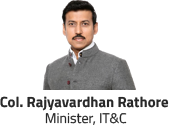OEM Name: VMware
Technologies: Cloud Computing
-
Intermediate
Course level -
40 Hrs
Duration -
₹ 97500
Course fee Excluding GST -
Lump Sum
Fee payment
-
Graduation
Min. qualification -
N/a
Min. academic % -
18 yrs
Min. age -
Provided
Placement assistance
Description & features
Enroll for the 5-day VMware vRealize Automation: Install, Configure, Manage [V8.3] certification training course from Koenig Solutions accredited by VMware. In this course you learn installing, configuring, and managing VMware vRealize® Automation™. You learn about how vRealize Automation can be used to automate the delivery of virtual machines, applications, and personalized IT services across different data centers and hybrid cloud environments.Through a blend of hands-on labs and interactive lectures, you learn how to manage both on-premise systems and cloud services. The course covers how vRealize Automation Service Broker can aggregate content in native formats from multiple clouds and platforms into a common catalog. This course also covers interfacing vRealize Automation with other systems using VMware vRealize® Orchestrator™ and how to use vRealize Automation to manage Kubernetes systems and leverage other systems. The course also covers integrating with Terraform and using SaltStack as a configuration management tool.
General Info
Key Features
By the end of the course, you should be able to meet the following objectives: • Describe the vRealize Automation architecture and use cases in cloud environments • Manage vRealize Automation entities on VMware and third-party virtual and cloud infrastructures. • Configure and manage Cloud Accounts, Projects, Flavor Mappings, Image Mappings, Network Profiles, Storage Profiles, Volumes, Tags, and Services. • Create, modify, manage, and deploy Cloud Templates. • Connect to a Kubernetes Cluster and manage namespaces. • Customize services and virtual machines with cloudConfig. • Configure and manage the Service Broker. • Configure and manage ABX actions, custom properties, event broker subscriptions, and vRealize Orchestrator workflows. • Integrate with vRealize Orchestrator. • Install vRealize Automation with Lifecycle Configuration Manager. • Describe Cloud Automation Services (Cloud Assembly and Code Stream). • Integrate Cloud Assembly with Terraform and SaltStack. • Use logs and CLI commands to monitor and troubleshoot vRealize Automation.
Curriculum
Course Prerequisite: This course requires completion of one of the following courses: • VMware vSphere: Install, Configure, Manage. • VMware vSphere: Fast Track. Experience working at the command line is helpful. This course requires that a student be able to perform the following tasks with no assistance or guidance before enrolling in this course: • Create VMware vCenter Server® objects, such as data centers and folders. • Create a virtual machine using a wizard or a template. • Modify a virtual machine’s hardware. • Migrate a virtual machine with VMware vSphere® vMotion® . • Migrate a virtual machine with VMware vSphere® Storage vMotion®. • Configure and manage a vSphere DRS cluster with resource pools. • Configure and manage a VMware vSphere® High Availability cluster. If you cannot perform all of these tasks, VMware recommends that you complete one of the prerequisite courses before enrolling in VMware vRealize Automation: Install, Configure, Manage. Career Progression: VMware Engineer, Cloud Computing Engineer Course Content 1 Course Introduction: • Introductions and course logistics. • Course objectives. 2 vRealize Automation Overview and Architecture: • Describe the purpose and functionality of vRealize Automation. • Describe the vRealize Automation architecture. • Describe the use of VMware Workspace ONE® AccessTM. • Describe the relationship between Kubernetes clusters, containers, and vRealize Automation services. • Describe CLI commands for vRealize Automation 8 cluster management. • Describe Cloud Assembly. • Describe Service Broker. • Describe Code Stream. 3 Installing vRealize Automation: • List the different vRealize Automation deployment types. • Describe the purpose of vRealize easy installer. • Describe the vRealize Automation installation process. 4 Authentication and Authorization: • Identity the steps involved in integrating Workspace One with Active Directory. • Describe features of Workspace One. • Describe the user roles available in vRealize Automation. • Identify the key tasks performed by each user role. • Define custom roles. • Configure branding and multitenancy. 5 Basic Initial Configuration: • Quickly create a basic configuration with a cloud account, cloud zone, project, flavor mapping, and image mapping. 6 VMware Cloud Templates: • Configure and deploy a basic cloud template. • Create cloud templates that can run on any cloud. • Use cloudConfig to run commands, install software, and create users. •Use YAML for inputs, variables, and conditional deployments. 7 Tags and Storage Configuration: • Configure tags. • Describe different types of tags. • Manage tags. • Configure storage profiles. • Use tags and storage profiles. 8 Integrating NSX-T Data Center: • List the capabilities and use cases of NSX-T Data Center. • Describe the NSX-T Data Center architecture and components. • Integrate NSX-T Data Center with vRealize Automation. • List the supported network profiles in vRealize Automation. • Use NSX-T Data Center components to design a multitier application Cloud Template. • Identify the network and security options available in design canvas. • Create and manage on-demand networks and security groups. • Configure NSX-T day 2 actions. 9 Integrating with Public Clouds: • Configure and use VMware Cloud Foundation accounts. • Configure and use an AWS cloud account. • Configure and use an Azure cloud account. • Configure and use a Google Cloud Platform cloud account. 10 Using Service Broker for Catalog Management: • Release a VMware Cloud Template™. • Define content source and content sharing. • Define Service Broker policy enforcement. • Use custom forms for catalog items. 11 vRealize Automation Extensibility: • Describe Extensibility. • Use event topics. • Create a subscription. • Call a vRealize Orchestrator workflow. • Create ABX actions. 12 Using Code Stream: • Introduction to Code Stream. • The CI/CD process. • Integrate GitLab with Code Stream and Cloud Assembly. • Use Code Stream to install software. 13 Using Terraform: • Integrate Cloud Assembly with Terraform. • Use Terraform with a VMware Cloud Template. • Use Terraform with Code Stream. 14 Using Kubernetes Clusters: • Introduction to Kubernetes. • Connect to an existing Kubernetes Cluster. • Integrate VMware Tanzu™ Grid Integrated Edition. • Create a Supervisor Namespace as a catalog item. 15 Using SaltStack for Configuration Management: • Introduction SaltStack with vRealize Automation. • Use SaltStack for software deployment. • Use SaltStack for configuration management. • Use SaltStack with event-driven orchestration. 16 vRealize Automation Troubleshooting and Integration: • Location of logs. • Using Activity. • Monitoring deployment history. • Basic troubleshooting. • CLI commands. • Collecting logs (VAMI console). • Integration with VMware vRealize® Log Insight™. • Integration with vRealize Operations. • Migrating vRealize Automation 7.x to 8.
Documents








